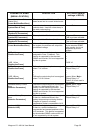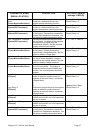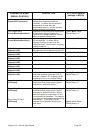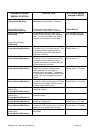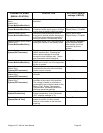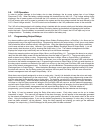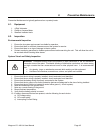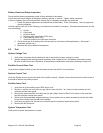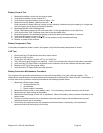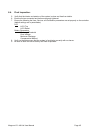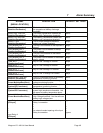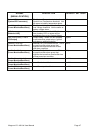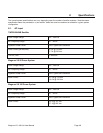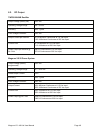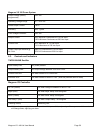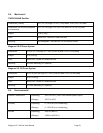
Magnum VS –48 Vdc User Manual Page 44
Battery Current Test
1. Measure the battery current with a clamp-on meter.
2. Verify that the battery current is below 5 A.
3. Verify that the displayed battery current is within +
5 A.
4. Determine the total battery capacity at the site:
Cells connected in series make up a string, and the capacity is determined by the capacity of a single cell.
Add Ah capacity for all strings connected in parallel.
5. Determine the Max. Batt. Recharge rate:
Divide Total battery capacity by 20 hours and enter it in the appropriate box on the Site Form.
6. Verify that the Max. Batt. Recharge rate is set to the calculated value.
7. Remove ac power to the rectifiers purposely causing the battery discharge alarm to come on.
8. Verify that the System Current is 0 +
5 A.
9. Verify that the battery current is within 5 % of the system current recorded previously.
10. Restore ac power to the rectifiers.
Battery Temperature Test
If the battery temperature probe is used in this system, verify that the battery temperature is correct.
LVD Test
1. Ensure that the LVD parameters are set to proper values.
2. Record the LVD trip point.
3. To test the LVD function, set the LVD Trip to –56.00 Vdc.
4. The LVD should have dropped out (opened). Verify it by monitoring the voltage at the battery connection.
5. Verify that the LVD Open Alarm is registered on the controller and at the customer remote alarm panel.
6. Reset the LVD Trip to the original setting.
7. Verify that the LVD Open Alarm has been removed.
Battery Preventive Maintenance Procedure
The purpose of the preventive maintenance is to ensure that the battery is in good, working condition. The
observations, measurements, and tests performed are designed to determine the “state of health” of the battery. It
will also allow for the prediction of future performance and preempt possible failure.
1. Measure the float charge voltage.
a. At the power bay bus.
b. At the battery.
c. Reset voltage if necessary.
2. Measure the float current on each battery cable. If it is fluctuating, measure maximum and minimum.
3. Measure the ac ripple voltage at the battery.
4. Measure the float voltage of each cell or monoblock. Record the battery memory location allocated on the
battery tester.
5. Perform a load test on each cell or monoblock and measure the internal cell resistance and inter-cell
resistance of each cell or monoblock.
6. Ensure that all protective covers are replaced and that the battery is electrically non-hazardous to
personnel that could be working in the vicinity



